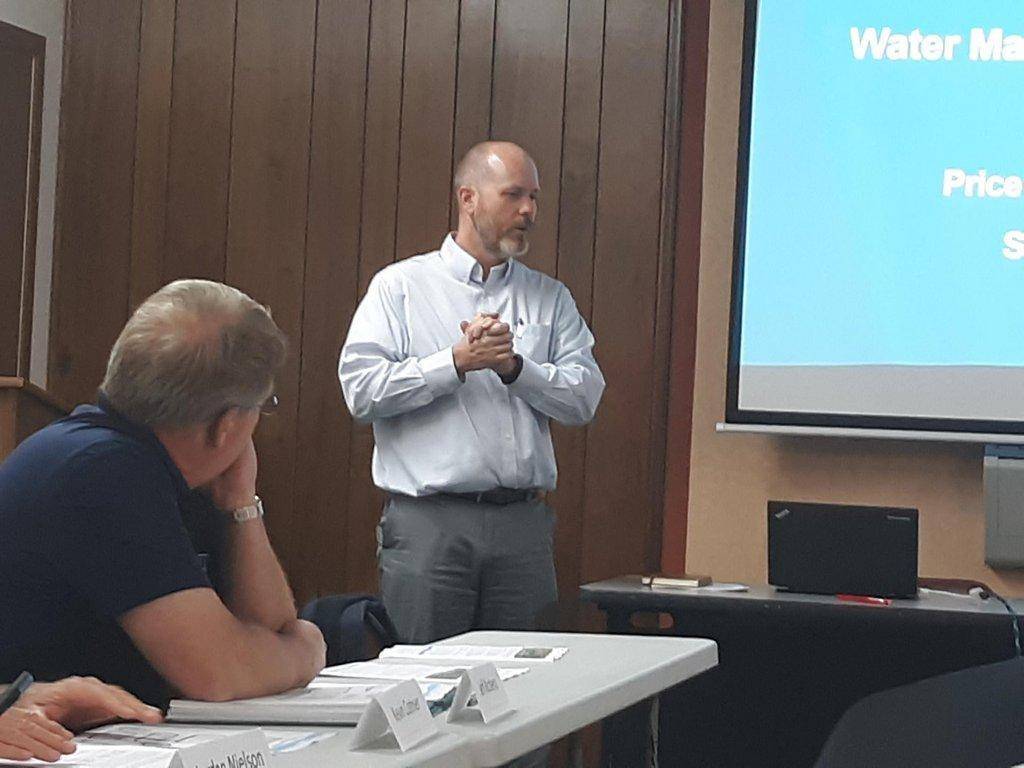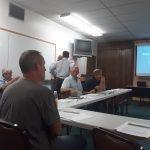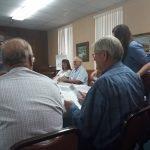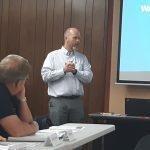Nathan Bracken was welcomed to the Price River Water Resources Committee meeting last week in the Price City Hall to give a presentation on water banking.
Bracken began with a disclaimer that he was not there for a blessing or any type of approval. He was simply visiting, with a colleague, to receive feedback and constructive thinking on water banking and the draft legislation that is being put together.
In 2017, the governor came out with a recommended water strategy and water banking was one of the options listed. The purpose of the strategy is to plan for and accommodate demands in Utah on limited water and it stated that there must be a way figured for expected urban growth and a robust agriculture community, as well as water for the environment.
At the time of the strategy being released, a number of different efforts were underway to deal with each aspect. A bill was introduced to look at instream flows, ways to improve agriculture and more.
All groups were assessed and after a discussion, the groups merged and stated that water banking was identified as the best tool to use. Water banking was recommended as a way to create water markets and was also identified as a way of potentially providing instream flows and satisfying some urban needs.
Due to efforts underway, the group has grown to over 70 individuals around the state that have been working on water banking. They are studying how it looks around the state, speaking with different people in unique basins and more. Bracken stated that the big question for the area is: why water banking?
The projected population growth through 2065 is to roughly double.
“In a dry state like ours, the questions becomes, where are we going to get the water?” Bracken stressed.
He also stated that the water is allocated and now there just needs to be a figuring of how to use what is available. The current pressures are increased population, development, recreation, drought and climate, and agricultural uses. Most of the water that is currently utilized for urban growth has come from agriculture.
Bracken then spoke on buy and dry transfers and how they are an issue for rural areas that are dried, highlighting the lower Arkansas Valley of Colorado.
It is estimated that 50 percent of farmland could be fallowed by 2050 to supply urban growth. Due to the buy and dry that occurred in the aforementioned area of Colorado, there is now a 47 percent unemployment rate in the area as of 2017. Bracken informed those in attendance that they have developed the 2017-19 water banking working group statewide initial study effort. Water banking avoids the buy and dry trend.
He explained that water banking is like a financial institute for a water right that one may not be utilizing. The share may be leased out to someone else until the time that it is needed again by the owner. In the senate, there was a joint resolution with Senator Jani Iwamoto and Representative Stewart Barlow.
There has also been an appropriation of $400,000 and a draft legislation. The committee aptly engaged with Bracken and his colleague on water banking and what it would mean for Carbon County. However, as aforementioned, no firm decisions were made during the meeting and presentation.






